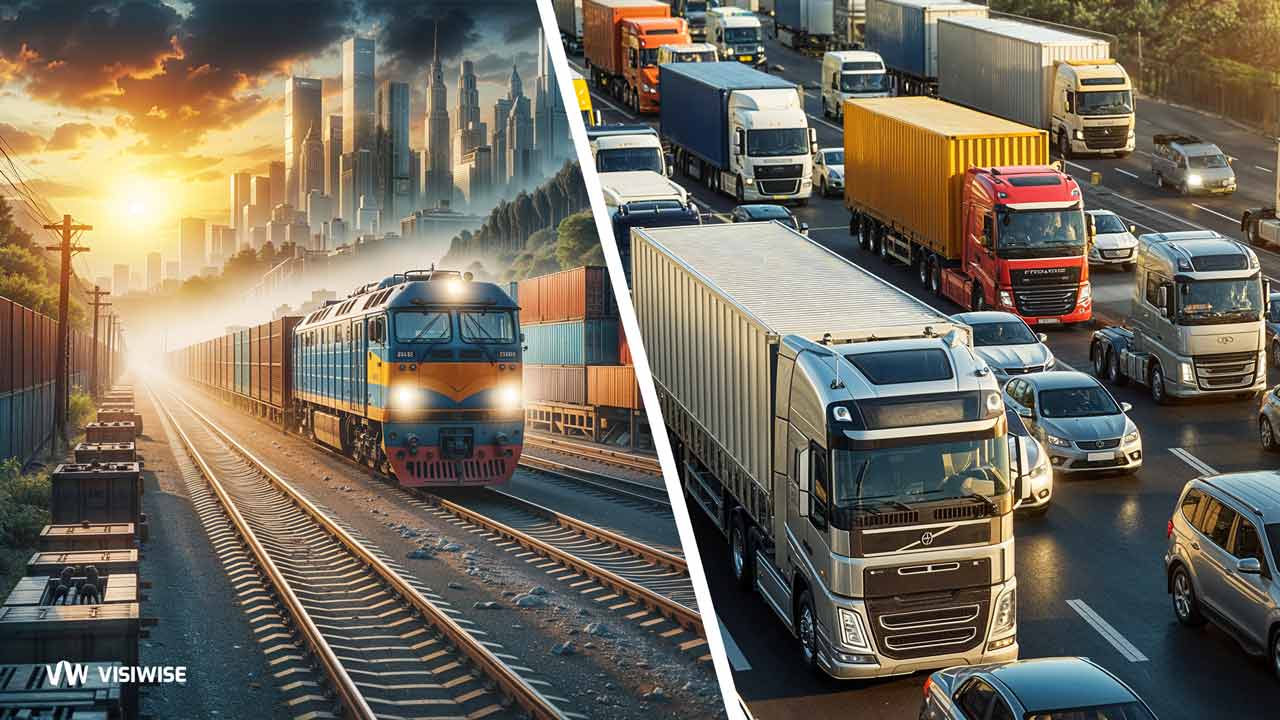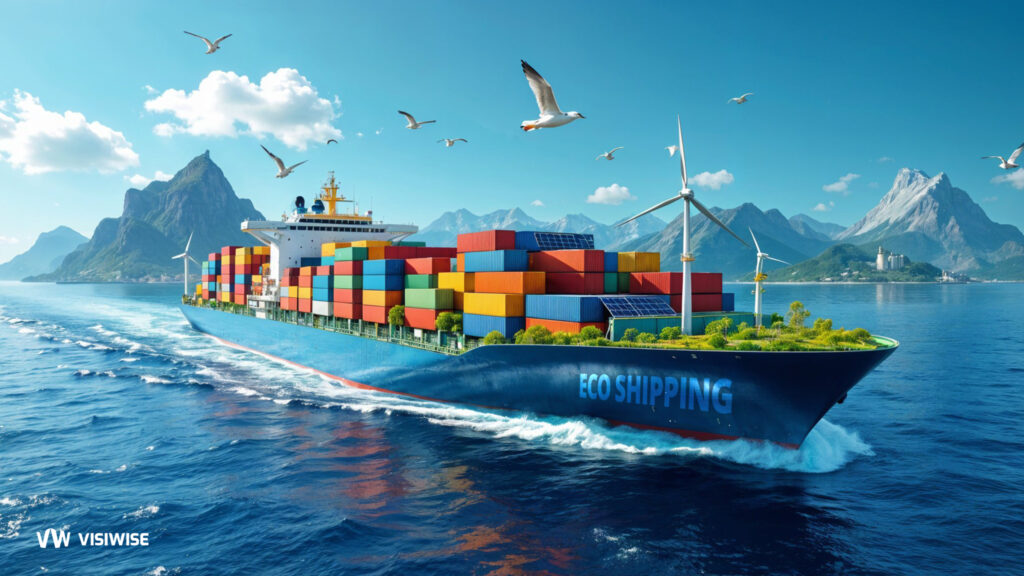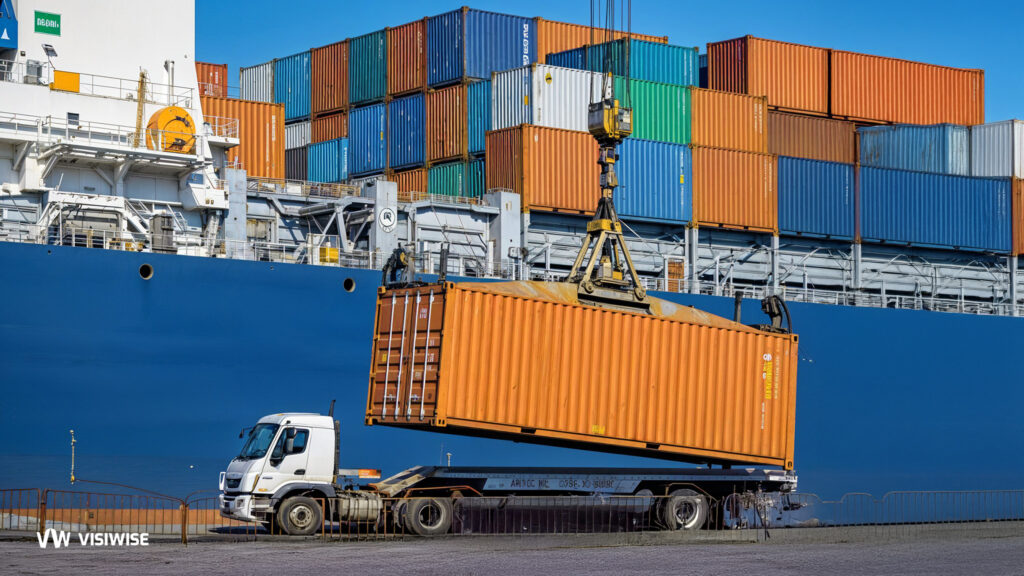The transportation of goods across Europe has been historically dominated by road transport. However, in recent years, there has been a significant policy and industry shift towards rail freight. This shift is driven by a variety of factors, including environmental concerns, economic efficiency, and the increasing congestion of road networks. This article explores the dynamics of this shift from road to rail transport in Europe, examining its drivers, benefits, challenges, and future prospects.
The Strength of Road to Rail
First, let’s define what we mean by ‘road to rail’. This term refers to the strategy of replacing the majority of long-haul transport with rail instead of trucks, while leaving only the first and last mile transport to road.
With freight demand in Europe expected to rise by over 3% per year until 2050, there are compelling reasons to shift a larger share of transport demand to rail.
Cutting carbon emissions is certainly the most significant reason. Rail transport produces 75% less CO2 emissions per tonne-kilometer compared to road freight transport. Yet, currently, rail accounts for only around 19% of total freight transport in the EU, while road accounts for 75% and inland waterways 6%.
There is a growing desire among industry stakeholders to push for greener solutions. End consumers are demanding a lower carbon footprint from their products, manufacturers are responding to these demands, and logistics providers are facilitating the flow of goods with an eye on sustainability. This collective movement enhances the appeal of rail transport.
The road freight industry in Europe is also working to reduce its CO2 footprint through the use of biofuels and cleaner energy sources. However, these emission cuts will reach a certain plateau. Rail transport has the potential to achieve greater emission reductions—if we enable it.
Beyond carbon reduction, there are other advantages to supporting rail transport, such as lower road congestion, reduced noise pollution in urban areas, and safer transportation. Moreover, recent challenges in the trucking sector highlight the need for a shift:
- Freight prices have increased by as much as 60% due to an acute shortage of truck drivers.
- New EU legislation on driver mobility and wage equality is making cross-border trucking more complex.
- The rising cost of fuel.
- Supply chain constraints resulting in long waiting times for new equipment, like trailers.
All these factors point to an inflection point. The momentum for shifting from road to rail has never been stronger.
The Need for a Shift
Environmental Concerns
One of the primary motivations for shifting from road to rail transport is the environmental impact. The transportation sector is a significant contributor to greenhouse gas emissions, with road transport being particularly carbon-intensive. According to the European Environment Agency, road transport accounts for nearly 72% of all transport emissions in the EU. Rail transport, on the other hand, is far more energy-efficient and emits significantly less CO2 per ton-kilometer of freight transported. Electrified railways, in particular, offer a cleaner alternative, as they can utilize renewable energy sources.
Economic Efficiency
Rail freight can offer substantial economic benefits, particularly for long-distance and bulk transportation. Trains can move large quantities of goods more efficiently than trucks, reducing the cost per ton-kilometer. Moreover, rail transport can alleviate congestion on highways, leading to less wear and tear on road infrastructure and lower maintenance costs. By shifting freight to rail, Europe can optimize its transportation network, making it more cost-effective and sustainable.
Congestion and Infrastructure
European road networks are increasingly congested, particularly around major urban centers and key transportation corridors. This congestion not only delays shipments but also increases the likelihood of accidents and environmental pollution. Rail transport can help mitigate these issues by providing an alternative that can handle large volumes of cargo efficiently. Additionally, rail networks are less prone to traffic jams and can offer more predictable transit times.
European Policies Promoting Rail Freight
The European Union has recognized the need to shift freight from road to rail and has implemented various policies to promote this transition. The European Green Deal, for instance, sets ambitious targets for reducing greenhouse gas emissions, with rail transport playing a crucial role. The EU aims to double rail freight traffic by 2030 and triple it by 2050. To achieve these goals, several initiatives and funding programs have been introduced.
Trans-European Transport Network (TEN-T)
The TEN-T policy aims to create a unified and efficient transportation network across Europe. It focuses on developing core network corridors that integrate rail, road, and waterway transport. By improving rail infrastructure and connectivity, TEN-T aims to make rail freight more competitive and attractive to shippers.
Shift2Rail
Shift2Rail is a European research and innovation initiative that seeks to enhance the efficiency and performance of rail transport. It supports the development of advanced technologies, such as automated train operations, smart logistics, and digital signaling systems. These innovations are designed to improve the reliability, capacity, and cost-effectiveness of rail freight services.
Financial Incentives
The EU provides various financial incentives to support the shift to rail freight. These include grants, subsidies, and loans for infrastructure development, rolling stock acquisition, and research projects. The Connecting Europe Facility (CEF) is one such program that funds transport projects with a focus on enhancing cross-border connectivity and sustainability.
Benefits of Shifting to Rail Freight
Environmental Benefits
Shifting freight from road to rail offers substantial environmental benefits. Rail transport is far more energy-efficient and produces significantly lower emissions of greenhouse gases and pollutants. This shift can contribute to meeting the EU’s climate targets and improving air quality in urban areas. Moreover, railways can help preserve natural habitats and reduce the ecological footprint of transportation infrastructure.
Economic Competitiveness
Rail freight can enhance the economic competitiveness of European industries by providing reliable and cost-effective transportation options. It can reduce logistics costs, particularly for bulk commodities and long-distance shipments. Furthermore, rail transport can improve supply chain resilience by offering an alternative to road transport, which is susceptible to congestion and disruptions.
Reduced Road Congestion
By shifting freight to rail, Europe can alleviate congestion on its road networks. This can lead to shorter travel times for passenger vehicles, reduced accident rates, and lower maintenance costs for road infrastructure. Additionally, it can decrease the external costs associated with road transport, such as noise pollution and road wear.
Improved Safety
Rail transport is generally safer than road transport, with lower accident rates and fewer fatalities. By reducing the volume of freight transported by road, Europe can enhance overall transportation safety. Moreover, railways are less affected by adverse weather conditions, making them a more reliable option for transporting goods.
Challenges in the Shift to Rail Freight
Despite the numerous benefits, the shift from road to rail freight faces several challenges that need to be addressed to realize its full potential.
Infrastructure Limitations
One of the primary challenges is the existing rail infrastructure, which in many parts of Europe is outdated and lacks the capacity to handle increased freight volumes. Investments are needed to modernize and expand rail networks, including the construction of new lines, upgrading existing tracks, and improving intermodal terminals.
Interoperability Issues
Europe’s rail network is fragmented, with different countries using varying technical standards, signaling systems, and operational procedures. This lack of interoperability creates barriers to seamless cross-border rail freight transport. Harmonizing these standards and enhancing coordination among national rail operators is essential for creating an integrated European rail network.
Competitive Disadvantages
Rail freight faces competition from road transport, which often has lower initial costs and greater flexibility for door-to-door delivery. To compete effectively, rail operators need to improve service quality, reliability, and speed. Additionally, regulatory frameworks should be adjusted to create a level playing field between different modes of transport.
Market Fragmentation
The European rail freight market is fragmented, with numerous small and medium-sized operators competing alongside larger national rail companies. This fragmentation can lead to inefficiencies and limit the ability to achieve economies of scale. Greater collaboration and consolidation within the industry could help address these issues and enhance competitiveness.
Technological Adaptation
While technological advancements offer significant potential benefits for rail freight, their adoption can be slow and costly. Implementing new technologies, such as digital signaling, automated operations, and advanced logistics systems, requires substantial investment and coordination among various stakeholders. Ensuring that these technologies are interoperable and widely adopted is crucial for maximizing their impact.
Case Studies of Successful Shifts to Rail Freight
The Betuweroute (Netherlands)
The Betuweroute is a dedicated freight railway line in the Netherlands that connects the port of Rotterdam to Germany. Opened in 2007, this 160-kilometer route was designed to handle high volumes of freight traffic, providing a vital link between one of Europe’s largest ports and the German industrial heartland. The Betuweroute has significantly increased rail freight capacity, reduced congestion on road networks, and demonstrated the benefits of dedicated freight corridors.
Swiss AlpTransit
Switzerland has been a pioneer in promoting rail freight through its AlpTransit project, which includes the Gotthard Base Tunnel and the Lötschberg Base Tunnel. These tunnels provide high-capacity, low-gradient routes through the Swiss Alps, facilitating efficient north-south rail freight transport across Europe. The project has successfully shifted a significant portion of transalpine freight from road to rail, reducing environmental impact and improving logistics efficiency.
Rail Freight Corridors in Germany
Germany has been actively promoting rail freight through the development of rail freight corridors, such as the Rhine-Alpine Corridor and the Scandinavian-Mediterranean Corridor. These corridors enhance connectivity between key economic regions and ports, providing efficient and reliable rail freight services. By investing in infrastructure upgrades and modernizing rail operations, Germany has made significant strides in shifting freight from road to rail.
Future Prospects and Recommendations
The shift from road to rail freight in Europe holds immense potential for enhancing environmental sustainability, economic efficiency, and transportation resilience. However, realizing this potential requires concerted efforts from policymakers, industry stakeholders, and financial institutions. Several key recommendations can help accelerate the shift to rail freight:
Increased Investment in Infrastructure
Significant investments are needed to modernize and expand rail infrastructure across Europe. This includes upgrading existing tracks, building new lines, and enhancing intermodal terminals. Public-private partnerships can play a crucial role in mobilizing the necessary resources for these projects.
Harmonization of Standards
To facilitate seamless cross-border rail freight transport, it is essential to harmonize technical standards, signaling systems, and operational procedures across Europe. The European Union should continue to promote interoperability and enhance coordination among national rail operators.
Technological Innovation
Investing in technological innovation is critical for improving the efficiency and competitiveness of rail freight. This includes adopting digital signaling systems, automated train operations, and advanced logistics solutions. Research and innovation initiatives like Shift2Rail should be supported and expanded.
Policy Support
Policymakers should create a favorable regulatory environment for rail freight by addressing competitive disadvantages and providing financial incentives. This includes implementing measures to internalize the external costs of road transport, such as carbon pricing and tolling, and offering subsidies for rail infrastructure development.
Industry Collaboration
Greater collaboration and consolidation within the rail freight industry can enhance efficiency and competitiveness. Industry stakeholders should work together to create integrated logistics solutions, share best practices, and achieve economies of scale.
Rail Freight Efficiency in Europe with Real-Time Visibility
Real-time visibility platforms are integral to the modernization and optimization of rail freight operations in Europe, especially within the context of the industry’s strategic shift from road to rail transport. These platforms leverage cutting-edge technologies, such as GPS tracking, RFID tagging, and IoT sensors, to provide granular, real-time insights into every aspect of the supply chain. By seamlessly integrating with existing systems and databases, these platforms offer stakeholders precise visibility into the location, condition, and status of shipments throughout their journey. For example, rail operators can utilize predictive analytics algorithms to anticipate potential bottlenecks or disruptions along the route, allowing for proactive rerouting and scheduling adjustments to minimize delays and optimize transit times. Moreover, advanced features like geofencing and temperature monitoring enable stakeholders to ensure compliance with regulatory requirements and maintain the integrity of temperature-sensitive cargo, such as pharmaceuticals or perishable goods. Additionally, real-time visibility platforms facilitate data-driven decision-making by providing actionable insights into key performance indicators (KPIs) such as transit times, dwell times, and asset utilization rates. This empowers stakeholders to identify inefficiencies, streamline operations, and ultimately enhance the overall competitiveness and sustainability of rail freight in Europe. Overall, these platforms serve as indispensable tools for driving operational excellence, improving customer satisfaction, and accelerating the transition towards a more efficient and environmentally-friendly rail freight ecosystem.
Conclusion
The shift from road to rail freight in Europe is a critical step towards achieving sustainable and efficient transportation. By addressing environmental concerns, reducing congestion, and enhancing economic competitiveness, rail freight can play a pivotal role in Europe’s future transport strategy. While challenges remain, concerted efforts from policymakers, industry stakeholders, and financial institutions can unlock the full potential of rail freight and create a more sustainable and resilient transportation network for the continent.



